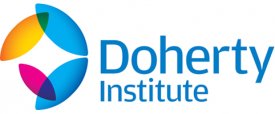01 Sep 2020
Unlocking the door to hepatitis B cure
Scientists at the Doherty Institute, have recently made two key discoveries that will contribute to global efforts to develop a therapeutic cure for hepatitis B (HBV).
Despite it being more than 50 years since the discovery of the “Australia Antigen” (now known to be the hepatitis B virus (HBV) envelope protein that forms part of the virus structure), there is no cure for HBV infection and current treatments are long term, life-long in the vast majority.
Chronic hepatitis B disease (CHB) caused by HBV infection affects over 257 million people worldwide, including 110 million people in the Asia-Pacific region and 240,000 Australians.
CHB can lead to end-stage liver disease with cirrhosis, liver failure and liver cancer; more than 880,000 people die each year directly from HBV related causes.
Using state of the art bioinformatics, the HBV Molecular Virology group headed by Professor Peter Revill and Bioinformatics group headed by Dr Lilly Yuen, have identified highly conserved regions of the HBV genome present across multiple HBV strains and disease stages that represent novel antiviral targets.
In addition, the team has identified distinctly different HBV sequence populations in the pre-treatment sequences of HBV patients who naturally achieved a functional cure during antiviral treatment.
“Functional cure is a rare outcome during current therapy (less than 1 per cent of patients) however we believe that within the pool of viral sequences from patients who achieved functional cure in our study, lie key sequence changes in the HBV genome that promoted functional cure,” Professor Revill said.
“We are further exploring this in the laboratory.”
Their findings have recently been published by the premier liver journal Hepatology. The study was funded by a research grant from Gilead Sciences, USA.

